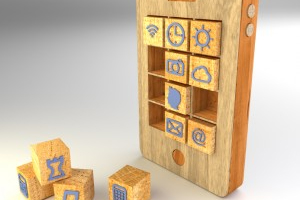This post is a follow up to The Right App after some lovely feedback comments – so thank you. This post is about providing some language apps that I feel meet the neuroscience principles.
This app was developed for primary school students. This app works on developing a student’s ability to construct grammatically and semantically correct sentences. It is important to note that students need to be literate for this app. I feel this app meets the neuroscience principles as;
- It has 3 levels of sentence complexity, therefore it is adaptive
- Within each level there are multiple repetitions of grammatical structures (such as pronouns), also after correctly completing each sentence it says the sentence aloud, providing repetition
- After each sentence there is a visual and auditory reward such as a cartoon dog saying “great job”
- It is a novelactivity as it is a different way to target sentence structure and involves the visual, tactile and auditory systems
- It does not provide specific feedback such as “have a look at your pronouns” but does provide positive feedback “try again”
This app was developed by Super Duper® Publications to help students learn how to ask and answer a variety of WH questions. This app targets who, what, where, when and why. Once again for this app it is best if the student is literate, however there is the option of having each question read aloud. I feel this app meets the neuroscience principles as;
- There are four different activities that target each question type in multiple choice and matching exercises which is novel
- It provides tonal feedbackfor both correct and incorrect response, although this is not specific feedback, it does give some feedback so that a student could complete this task independently.
- It provides a visual and tonal rewardafter each exercise is completed, for example after completing a matching exercise a dragon comes onto the screen and blows the cards away
Sequencing with Milo is a lovely engaging app that teaches short, three part sequences, such as getting dressed or baking a cake. It meets the following neuroscience principles;
- Novel – not only is there a lovely little mouse acting out the sequences, at the completion of every sequence you can play a video of the sequence
- Feedback – through tones a student is informed of correct/incorrect sequencing
- Reward – after completing the sequence the student is provided with a video of the sequence as a reward, as well as some lovely motivation from Milo the mouse “ta dah”
I love this app! You can use it for multiple purposes; conversational tasks where you talk about the picture and what you are making, following instruction tasks or a vocabulary building exercise. It meets some of these neuroscience principles of learning;
- It is highly novel, there are bubbles popping in the ocean, animals moving and, sound effects. This app involves the senses; tactile, visual and auditory
- It is rewarding as after completing the task, such as following the instructions, the student can press the play button and watch the animations move across the screen
Category Carousel is an app that I use to help develop a student’s vocabulary. Vocabulary is a vital skill as it is the core component of language and comprehension. I believe it meets those all-important neuroscience principles of learning as;
- It provides audio correction (feedback) and reinforcement such as “super, you’re right, excellent” or “try again, sorry, nope”
- It is adaptive as you can teach multiple categories individually or simultaneously, as well as focus specifically on sub categories
- Category Carousel provides aural labels and sounds effects which are novel and engaging
- Finally the sound effects provide a reward-driven learning experience for the student, which will help them remain engaged and maintain the information they have learnt, strengthening those brain pathways
I will be doing some follow up posts with different apps that I use to work on social skills, literacy, communication and behaviour – so stay tuned!

